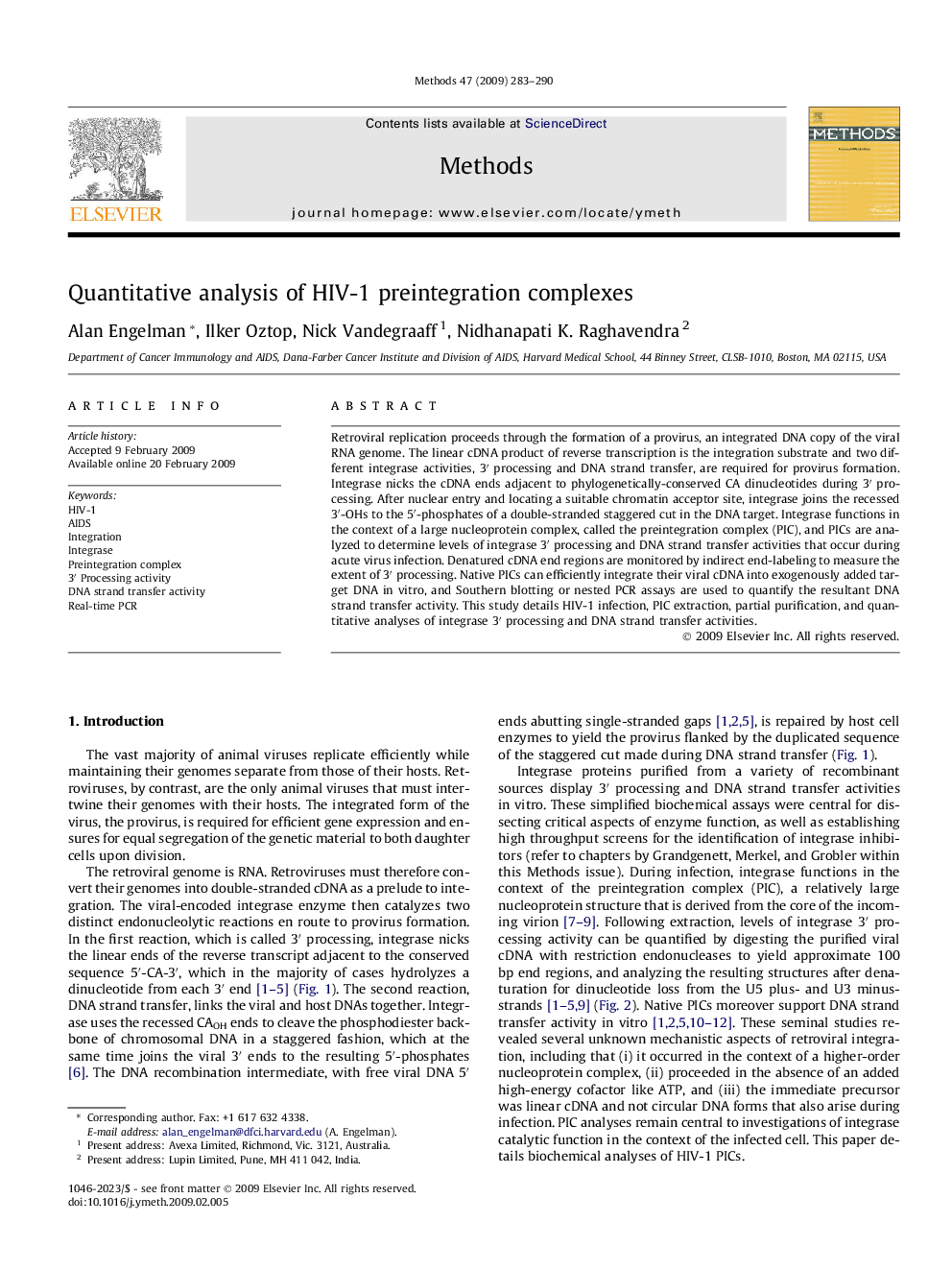| Article ID | Journal | Published Year | Pages | File Type |
|---|---|---|---|---|
| 1994231 | Methods | 2009 | 8 Pages |
Retroviral replication proceeds through the formation of a provirus, an integrated DNA copy of the viral RNA genome. The linear cDNA product of reverse transcription is the integration substrate and two different integrase activities, 3′ processing and DNA strand transfer, are required for provirus formation. Integrase nicks the cDNA ends adjacent to phylogenetically-conserved CA dinucleotides during 3′ processing. After nuclear entry and locating a suitable chromatin acceptor site, integrase joins the recessed 3′-OHs to the 5′-phosphates of a double-stranded staggered cut in the DNA target. Integrase functions in the context of a large nucleoprotein complex, called the preintegration complex (PIC), and PICs are analyzed to determine levels of integrase 3′ processing and DNA strand transfer activities that occur during acute virus infection. Denatured cDNA end regions are monitored by indirect end-labeling to measure the extent of 3′ processing. Native PICs can efficiently integrate their viral cDNA into exogenously added target DNA in vitro, and Southern blotting or nested PCR assays are used to quantify the resultant DNA strand transfer activity. This study details HIV-1 infection, PIC extraction, partial purification, and quantitative analyses of integrase 3′ processing and DNA strand transfer activities.
